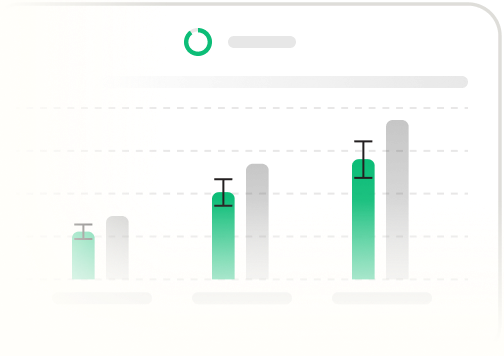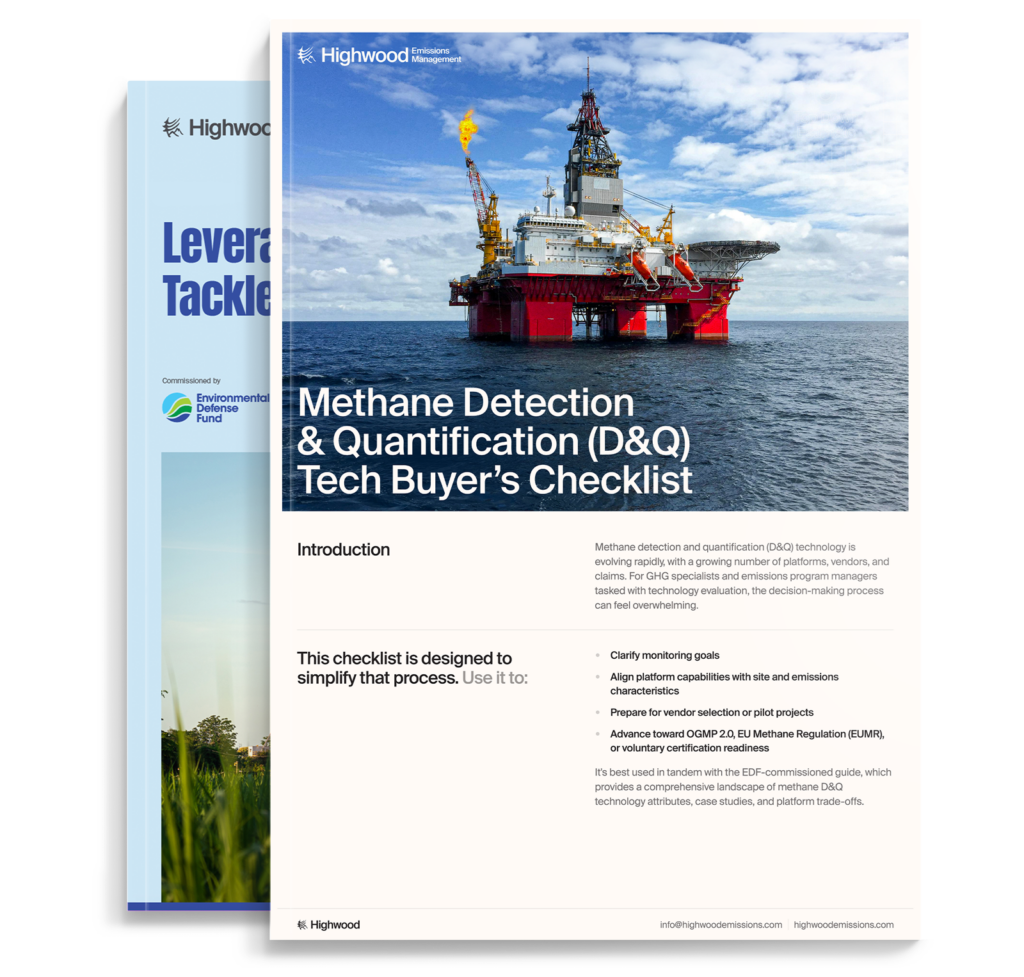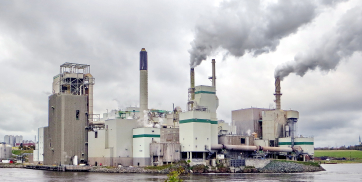- Compliance / Regulatory Affairs
Stay ahead of methane rules — without risking legal exposure
Translate complex, evolving policies into clear auditable workflows, so you can stay compliant, defend disclosures, and avoid enforcement surprises.
- Compliance / Regulatory Affairs
Stay ahead of methane rules — without risking legal exposure
Translate complex, evolving policies into clear auditable workflows, so you can stay compliant, defend disclosures, and avoid enforcement surprises.
- What you’re up against
Compliance risk isn’t just operational — it’s legal and it’s hard.
How Highwood helps compliance leaders

Platform
Provides traceable, regulation-ready workflows and auditable records — aligned to OGMP 2.0, EUMR, Subpart W, and OOOOb/c.

Consulting
Guidance on policy interpretation, legal-risk mapping, and readiness audits — customized by jurisdiction and rule set.

Education
Targeted training for field, legal, and compliance teams on evolving methane rules, SOPs, and enforcement-proof record keeping.
What you gain
Legal-ready records
Fully documented methods, data sources, and compliance logs — built for audit defense.
Policy clarity
De-risk compliance by mapping current rules to real-world workflows.
Cross-jurisdiction coordination
Report confidently across EU, US, and voluntary frameworks with shared data.
Fewer regulatory surprises
Respond faster to rule changes and avoid enforcement actions before they escalate.
Vendor accountability
Ensure third-party data and tech partners meet regulatory scrutiny.

- Executive Snapshot
“Protect your company, and your reputation, with a platform that delivers regulator-grade defensibility.”
SVP, Regulatory Affairs, Multinational E&P
- Verified
- Frequently asked questions
Staying ahead of methane regulation without exposing the business
What are the key differences between OGMP 2.0 and the EU Methane Regulation — and how do they affect compliance?
OGMP 2.0 is a voluntary reporting framework emphasizing transparency and measurement-informed inventories; EUMR is binding legislation requiring asset-level monitoring, LDAR, and public disclosure across all EU operations.
How do I prepare for enforcement under the EU Methane Regulation (EUMR)?
Operators must implement leak detection protocols, submit compliance reports, and retain evidence for audits. Preparations should include inventory traceability, technology defensibility, and third-party validation workflows.
What are the implications of U.S. Subpart W and OOOOb/c rules for upstream methane monitoring?
Subpart W governs emissions quantification; OOOOb/c focus on equipment standards and monitoring frequency. Together, they push operators toward verified measurements and tighter repair cycles.
What does ‘legal-readiness’ mean for methane measurement and reporting workflows?
Legal readiness requires documentation of all data sources, methods, assumptions, and audit trails — and alignment with both domestic and international rules for dual-listed or cross-border operators.
How should I approach third-party measurement vendors from a liability standpoint?
Vet vendors on data methodology, verification processes, and regulatory alignment. Ensure contracts cover data ownership, audit access, and legal defensibility in case of discrepancies.
How do I coordinate compliance efforts across jurisdictions with conflicting or overlapping methane rules?
Harmonize reporting practices using the most stringent applicable standards as a baseline. Centralize workflows and enable modular reporting to address different requirements with shared data.
What are common pitfalls that trigger regulatory penalties or enforcement actions?
Missing records, inconsistent measurement methods, lack of repair documentation, or underreported emissions. Most enforcement findings stem from weak internal controls — not bad intent.
How should I handle revisions to past methane reports in a way that limits legal exposure?
Document all changes transparently, cite methodological updates, and notify affected stakeholders promptly. Include version control and a signed compliance rationale.
What type of training or SOPs do I need to meet audit expectations under OGMP, EUMR, or EPA rules?
Provide clear procedures for data handling, LDAR protocols, and QA/QC steps. Ensure staff are certified or trained on relevant standards and can explain compliance logic in plain terms.
What’s the role of regulatory engagement and advocacy in shaping feasible methane rules?
Ongoing engagement ensures industry perspectives are heard and future rules reflect operational realities. Build coalitions, contribute to consultations, and track global alignment trends.


- Methane guide
Download your tech buyer’s checklist
Not sure how to evaluate the right technology stack for your sites?
This practical checklist — designed to complement the Industry Guide — helps GHG leaders and emissions managers define goals, assess constraints, and prepare for smart vendor conversations.
Includes prompts to help clarify:
- Measurement goals (OGMP, EUMR, voluntary)
- Emission source complexity & data needs
- Platform tradeoffs and vendor readiness
- Budget, accuracy, and regulatory exposure
Used by clients at all stages of the measurement journey, from early exploration to Level 5 reporting.

Your download includes a bonus report:
Leveraging Technology to Tackle Methane Emissions
- Get started


